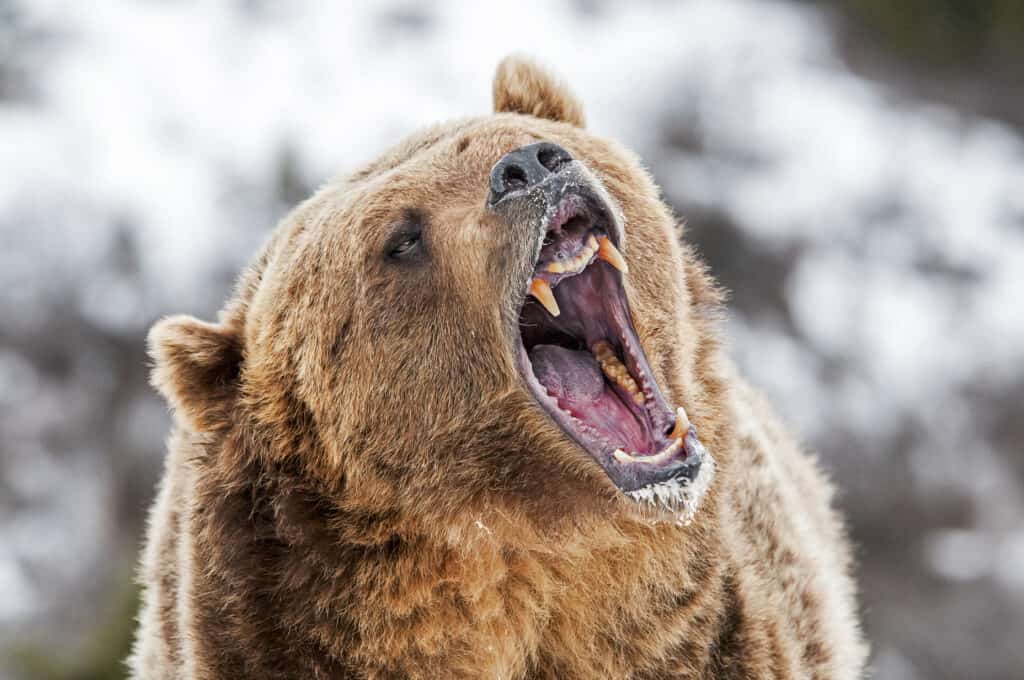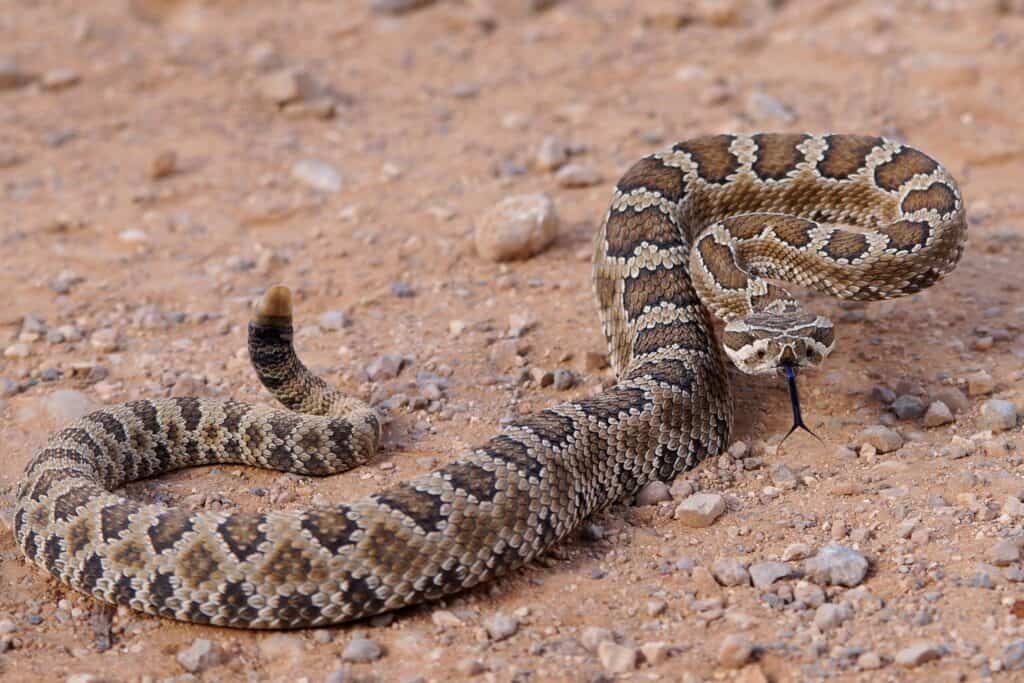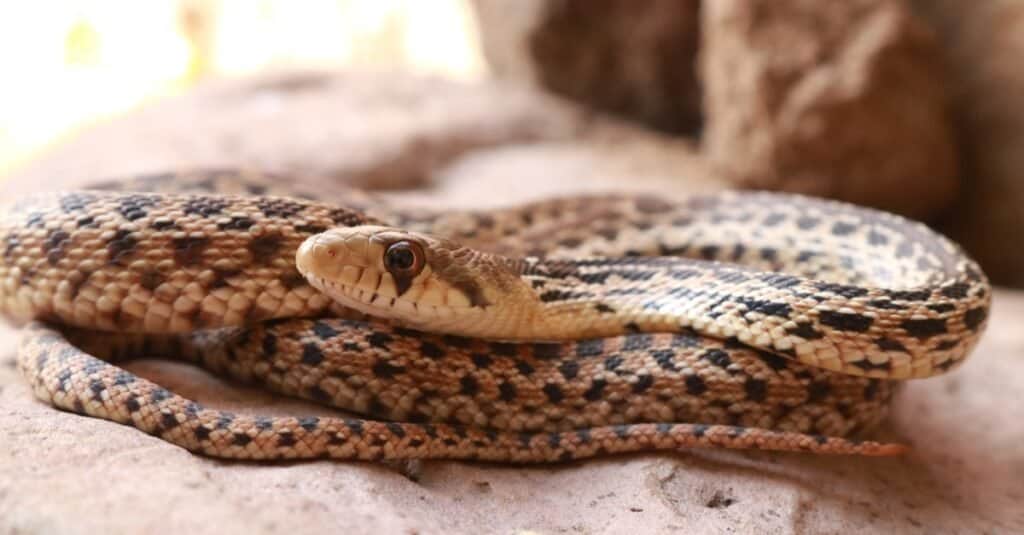When you think of Idaho you probably are not thinking of peril and danger, you are more likely to think of their state crop, the potato. Visiting the Idaho Potato Museum would be a completely safe adventure (yeah, it’s a real place!). But the landscape of Idaho is quite diverse with the mountains in Grand Teton State Park, the winding Snake River, and the beautiful Yellowstone National Park. These settings, while beautiful, are also the home of a wide range of wildlife and yes, some of them are potentially dangerous. The Safety page on the website for Yellowstone warns about the dangers of bears, bison, elk and wolves. The warning from Grand Teton State Park makes visitors aware of these same animals as well as coyotes, moose and rattlesnakes. Speaking of snakes, is the Snake River named for its population of slithering reptiles? Let’s find out about some of these dangerous animals and how to enjoy Idaho as safely as possible.
What Are the Most Dangerous Animals in Yellowstone National Park?
- Grizzly bears: Hiking or camping in bear country has its risks, but by following some basic rules you can reduce your chances of encountering a bear or being attacked. Grizzly bears are big, and have the combo of sharp teeth and powerful claws. They can grow to be 800 -1,200 pounds or more and are three to four feet at the shoulder. If they stand up on their hind legs, which they certainly can, they can reach eight feet tall! So avoiding bears all together is wise advise. By staying on designated roads and boardwalks and remaining in developed areas you can decrease your chances of encountering a bear. The chances of being attacked by a bear in these areas is only one in 59.5 million visits. Camping in the park and or hiking in the backcountry is very rewarding and it does increase your chances of being attacked by a bear, but even for overnight campers in roadside campgrounds the chances are one in 26.6 million visits. Camping or hiking it is incredibly important to keep food out of reach of bears and you can increase your safety by carrying bear spray.
- Bison: The majority of Yellowstone is in Wyoming, but the southeastern portion of Idaho is also designated as the park. According to the Yellowstone National Park website, bison are responsible for injuring more people in Yellowstone than other animals. This makes sense when you understand that Bison are the largest mammal in North America with the males weighing up to 2,000 pounds and reaching six feet at the shoulder. Yellowstone has the largest population of bison with around 4,900 bison roaming the park. What can be dangerous about bison, besides horns that can get to be two feet long, is that they can turn and charge at a remarkably fast rate. So staying at least 25 yards away is the best practice. A 72-year-old woman visiting Yellowstone in 2020 was attacked by a bison when she continuously tried to get closer for photos. She was injured from the horns of the bison and treated at the hospital. Many of the stories that involve people being injured by bison are when people approach the animals or get too close. This is why the park continues to enforce the regulations that visitors have to maintain a safe distance from animals in the park.
- Elk: The risk with elk is primarily the male elk that grow long antlers every year. In the late summer early fall, during breeding season, they are the most threatening so extra caution should be had during that time. Male elk are much bigger than your average white-tailed deer, they can grow to weigh 700 pounds or more. Their rack can have a spread of four feet with seven to eight different points. Just like deer and caribou they will shed their antlers every year and regrow the next ones in the spring. During the spring you do need to be cautious of the female elk, although they do not have antlers, they are very protective of their young and at 500 pounds, you wouldn’t want one to charge you. The Park Service safety recommendations apply to elk as well, so stay at least 25 yards away and do not approach them.
- Wolves: According to the National Park Service there has never been a human attacked by a wolf in Yellowstone, but there is a report of a woman from Idaho that was bow hunting that shares how she was nearly attacked by a wolf before she was able to shoot it. In Headquarters, Idaho, Rene Anderson who is an experienced hunter was surprised by a wolf that ran at her, she had just enough time to shoot it, preventing an attack. But attacks by wolves is extremely rare and keeping 100 yards away if you do see one is the best practice.

Grizzly bears can weigh as much as 1,200 pounds and reach eight feet tall when standing on their hind legs.
©Scott E Read/Shutterstock.com
What Dangerous Animals Are in the Mountains of the Grand Teton State Park?
- Great Basin rattlesnake: These rattlesnakes are venomous and can grow to be three to four feet long. They are tan with dark brown markings all along their body. Like most rattlesnakes they have a triangular head and a rattle for a tail. There have been confirmed snake bites but in general it is extremely rare for someone to die from a snake bite. According to the CDC there are only 5 fatalities per year in the US from snake bites. To be safe, wear hiking boots and stay on marked trails, if you do see a rattler, stay clear of it and calmly walk away, unprovoked attacks are even more rare.
- Gopher snakes: Watch out for gopher snakes as well! Although they are not venomous, they look very similar as Great Basin rattlesnakes, so you don’t want to assume one is safe if it might be a rattler. Gopher snakes are going to be skinnier than rattlesnakes and will not have a triangular head. They also will not have a rattle at the end of their tail but it is much safer to not get close enough to tell and even though they are not venomous, they can deliver a painful bite.

Great Basin Rattlesnakes are extremely well camouflaged.
©Matt Jeppson/Shutterstock.com
Are There Dangerous Snakes in the Snake River?
There are not snakes in the Snake River, but there are snakes in Idaho. As mentioned above there are Great Basin rattlesnakes and Gopher snakes in Idaho and you should be cautious around them. The most concerning animal in the Snake River could be the cutthroat trout. Trout fishing is the Snake River is a popular attraction, but you do need to know what you are doing. Consider the size of the trout on record in Idaho, a 31-inch (that is almost three feet!) Yellowstone cutthroat trout, was caught in 2020 in Boise by Nate Burr. He was an experienced fly-fisher who likes fishing for trout because they can put up quite a fight. This is where fishermen and fisherwomen need to be cautious, because they will fight even after being caught. They will do whatever it takes to get away and they have powerful jaws and razor-sharp teeth. So wearing gloves and knowing how to handle these giant fish will help protect you from injury. The Idaho Fish and Game Service hosts a free fishing day where anyone can fish for free and also learn how to fish; check their website for more information.

Gopher snakes are not venomous, but they are frequently misidentified as Great Basin rattlesnakes because they resemble them and mimic rattlesnake behavior. Since they’re difficult to tell apart, it’s best to avoid both types of snake in the wild.
©Creeping Things/Shutterstock.com
Up Next
The photo featured at the top of this post is © MattCuda/Shutterstock.com
Thank you for reading! Have some feedback for us? Contact the AZ Animals editorial team.






